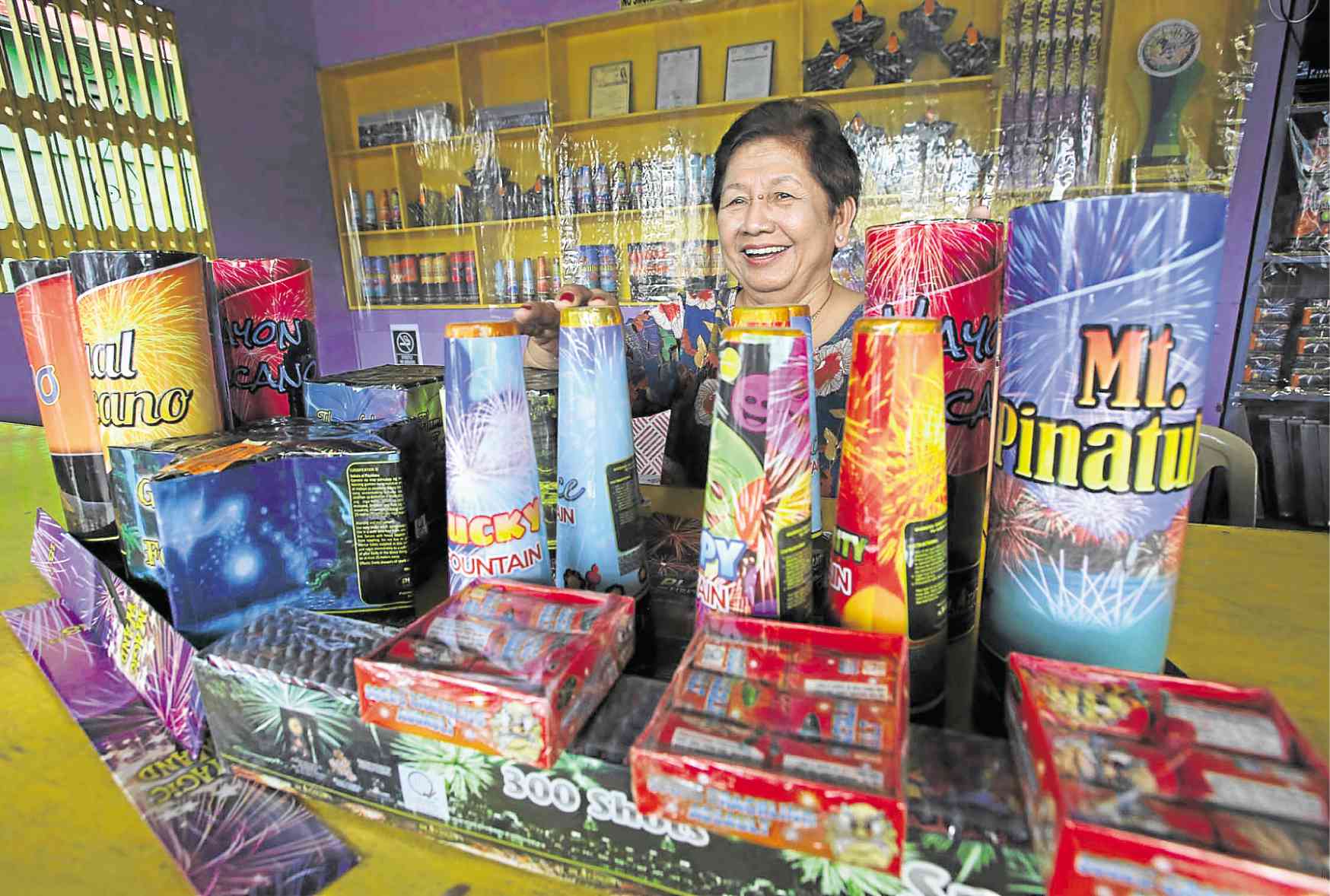
BEST-SELLERS Sparklers sold by licensed dealers in Bocaue town, Bulacan, are bought by revelers amid the government crackdown on powerful firecrackers and illegally manufactured pyrotechnics. – JOAN BONDOC
In welcoming 2018, the Department of Health (DOH) reported 191 injuries from Dec. 21, 2017, to Jan. 1, 2018, the entire monitoring period for firecracker injuries.
That figure, the DOH said, was 68 percent lower than the reported 604 firecracker injuries during the holiday season in 2017.
But, police and regional offices of the DOH reported 373 people injured in the revelry across the country on New Year’s Eve.
Executive Order No. 28, signed by President Rodrigo Duterte in 2017, limited the use of firecrackers to places designated by local governments and required police permit.
But even in fireworks zones, big bangers like “Superlolo,” whistle bomb, “Goodbye, Earth” and “Atomic big triangulo” are still prohibited.
According to the DOH, the “piccolo,” a small, candy-looking firecracker, was still the top cause of firecracker-related injuries despite being banned for more than five years because of its popularity among children.
Republic Act No. 7183, signed in January 1992, regulates the manufacture, sale and distribution of firecrackers and fireworks. The law also bans the use of potassium chlorate, a highly unstable chemical compound.
Fireworks and pyrotechnic devices allowed under RA 7183 are baby rocket, “bawang,” “triangulo,” pulling of strings, paper caps, “El Diablo,” “watusi,” “Judas’ belt,” sky rocket (“kwitis”) and other low-charged bangers.
Also legal are sparklers (“luces”), fountain; jumbo, regular and special “mabuhay,” Roman candle, “trompillo,” airwolf, butterfly and similar lightmaking devices.
Legal fireworks such as sparklers may be used within residential premises.
Source: Inquirer Archives